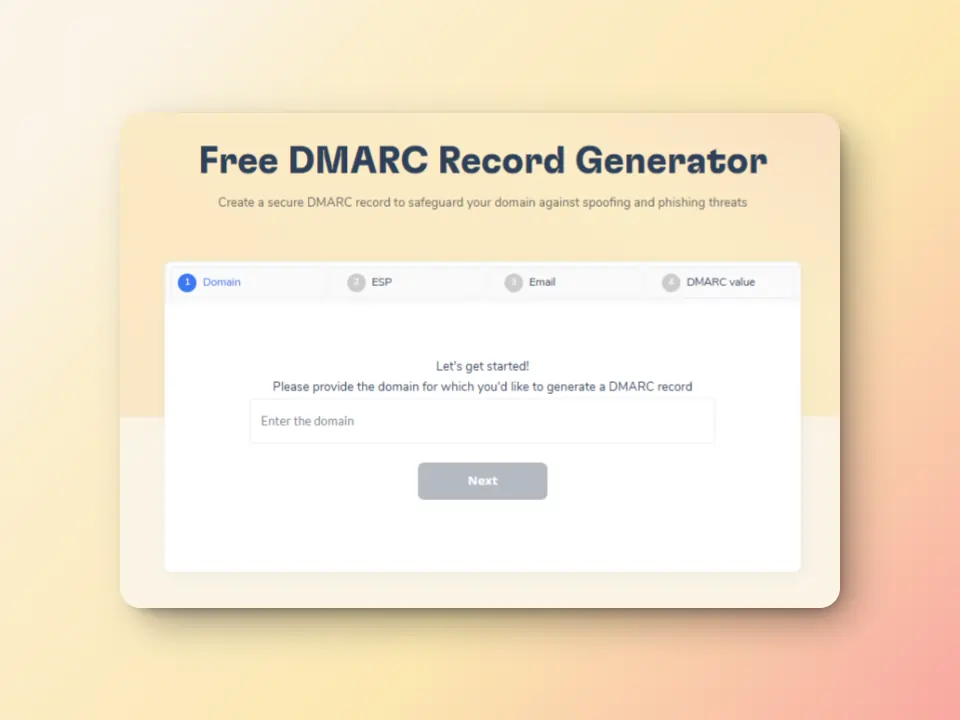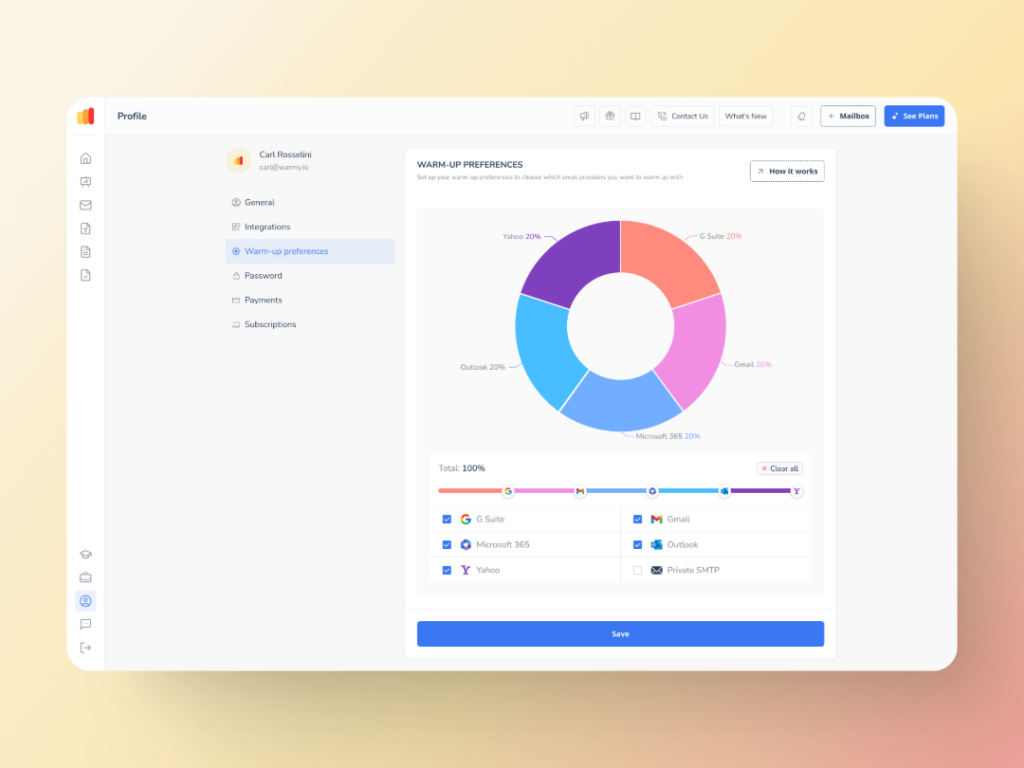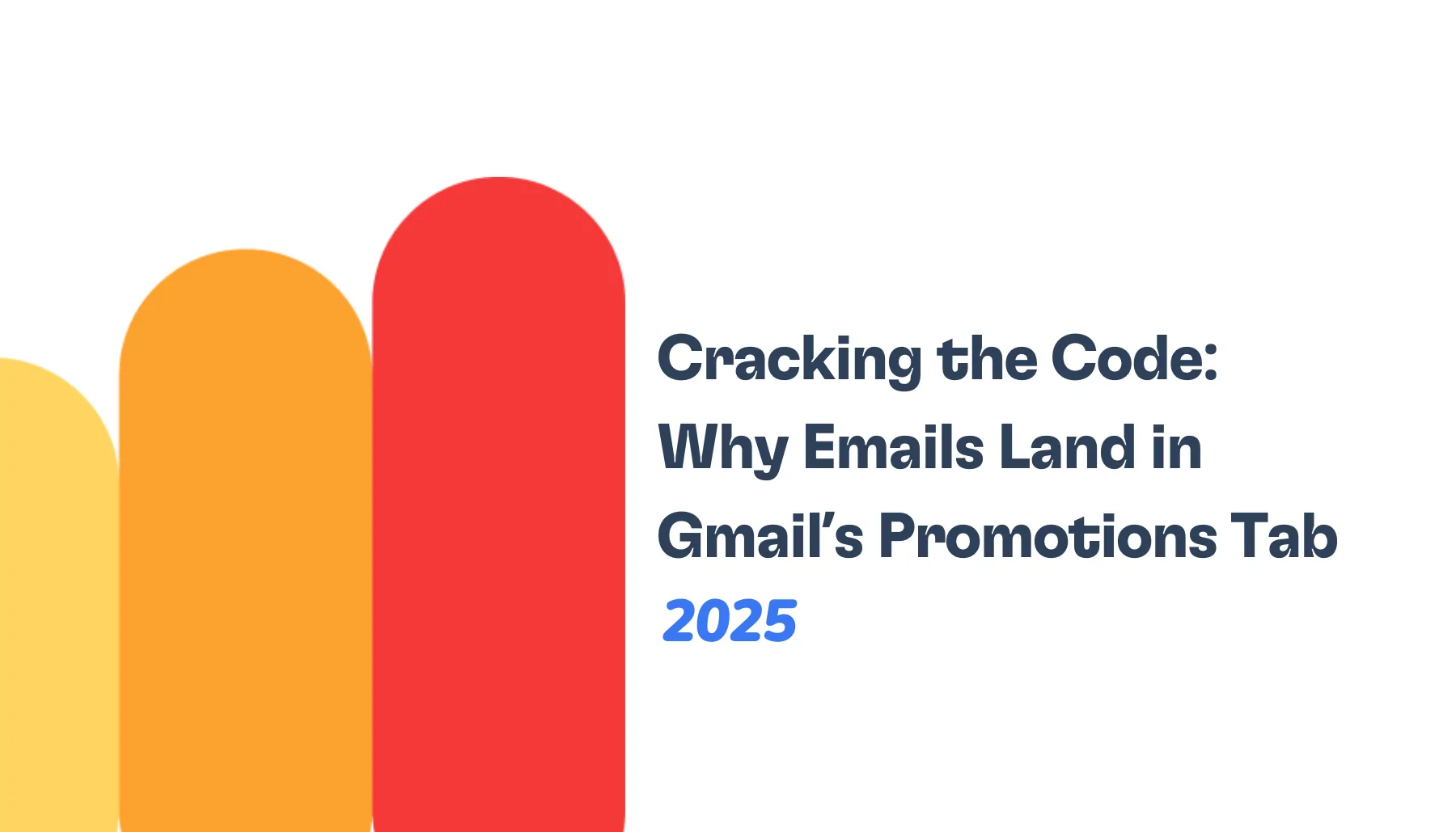Email spoofing is possibly the biggest danger in email marketing. Not only does it put recipients at risk, it can also destroy a brand’s image and email deliverability.
Cybercriminals frequently pose as business or individuals in order to defraud receivers, capture sensitive data, or infect them with malware—in Q4 of 2024 alone, there were over 989,000 unique phishing attacks detected across the globe.
Protecting your domain from spoofing is a critical move. It is no longer a choice—it is a requirement. DMARC (Domain-based Message Authentication, Reporting & Conformance) is a great solution to help combat email spoofing.
By setting up DMARC, you can prevent any email spoofing attempt and ensure that only trusted email senders can send emails on your behalf, which strengthens your brand’s security and boosts email deliverability.
What is email spoofing?
Email spoofing is when a hacker or cyber criminal sends an email that appears to be from a trusted source. The goal of email spoofing? To deceive the recipient and get something.
Spoofing, on the other hand, is when a fake “from” address is created in the email header. This then gives off the appearance that an email is real and from a legitimate source. The truth is, attackers don’t need access to your email account to accomplish this. They can impersonate any company or employees to use in their scams wherever they are.
There are different types of scams that cybercriminals execute:
- Phishing: Emails that pretend to be from actual companies or businesses to trick people into giving personal information like passwords or credit card numbers.
- Business Email Compromise (BEC): Scammers masquerade as bosses or workers seeking to have funds transferred or to obtain confidential business information. In 2024, BEC attacks comprised 73% of all reported cyber incidents.
- Malware spread: This can either be a malicious attachment or ransomware included in spoofed emails that infect the recipient’s device. Did you know that 94% of malware is delivered as email attachments?
The impact of spoofing on your brand’s reputation, customer trust, and email deliverability
- Email spoofing and phishing attacks can destroy your brand reputation. If your customers or leads get suspicious phishing emails that appear to come from you, they will start doubting why they should trust your business. They might even start hunting for signs of a spoofed email and end up distrusting your emails which would be translated into less open rates and conversions.
- Customers expect that emails from your company will be safe and legitimate. If they become the victim of a spoofing campaign, and their trust in your company is compromised, they may not open any incoming emails or make any purchases.
- Spoofed emails can also negatively affect your email deliverability. When spam filters start noticing fake email messages from your domain, even legitimate emails may start getting flagged as spam or even rejected altogether. This minimizes the likelihood of reaching your audience. Plus, it drives up email bounce rates.
What is DMARC?
DMARC is an email authentication protocol that builds on SPF (Sender Policy Framework) and DKIM (DomainKeys Identified Mail) to help protect your domain from phishing and spam campaigns. DMARC enables domain owners to specify policies or rules on how receiving email servers should handle unauthenticated emails (emails that fail SPF or DKIM checks).
Q: What are SPF and DKIM?
A: SPF (Sender Policy Framework) verifies which mail servers can send email on behalf of your domain. DKIM (DomainKeys Identified Mail) adds a cryptographic signature to emails to validate that the content has not been altered while traveling across the internet. These two email protocols are like protection against phishing.
🔖 Related Reading: SPF, DKIM, and DMARC: What They Are and Why You Should Care
In a nutshell:
- SPF verifies if the email’s sending server is permitted by the SPF record of your domain.
- DKIM authenticates the message integrity—ensuring that an email’s message is not tampered with, while also ensuring the presence of a valid cryptographic signature in the email header.
- DMARC is what binds these two protocols. It guarantees that both SPF and DKIM checks pass and provides a rule for what to do with a message if either of these two don’t pass (e.g. put in quarantine, reject). That way, recipients have a defense against email spoofing.
How does DMARC work?
DMARC works by adding a DNS TXT record that defines several key elements:
- The policy for handling emails that fail authentication (options include none, quarantine, or reject)
- The destination for sending reports on authentication outcomes
- Optional settings like SPF and DKIM alignment requirements
Policy options explained:
- None: No action is taken on emails that fail authentication; only reports are generated. This is useful for monitoring before fully enforcing policies.
- Quarantine: Messages that don’t pass authentication are identified as suspicious and are frequently routed to the junk or spam folder.
- Reject: Email receiving server will simply drop the email if DMARC checks don’t pass.
Benefits of implementing DMARC
DMARC offers a powerful defense to prevent email spoofing attacks:
- Enforces email authentication policies: It allows only authorized emails from your domain.
- Provides reports: You can receive detailed reports that show you which emails passed or failed DMARC checks, enabling you to flag unauthorized use or suspicious activity.
- Enhances email security: DMARC stops cybercriminals from impersonating your domain, make it harder to attempt phishing campaigns.
How a DMARC Generator simplifies email protection
A DMARC generator makes the process of creating a DMARC record really easy as you can input your settings and have an accurate record generated quickly and without errors. It formats the DNS TXT record that you will use based on your preferences and authentication setup. This removes any human error of manually adding those tags, avoiding mistakes, and ensuring that your DMARC record is set up correctly.
This can be daunting and risky for non-technical people (i.e. business owners and marketers), but a DMARC generator offers a user-friendly interface so you can create a DMARC record without having to be well-versed in IT. By following step-by-step instructions, it makes the procedure even easier and even those who are not technically skilled can also secure their email domain with its help.
Common DMARC setup challenges and how a generator helps
- Creating your DMARC record manually is an error-prone process. A simple oversight in the setup can result in email failures, undelivered emails, or a compromised domain. The usual culprits are incorrect syntax, incorrect alignment settings, or neglecting to list important sending sources.
- Manual DMARC record creation requires a good understanding of DNS records, email authentication, and a lot of technical intricacies involved. If you don’t have the knowledge, though, it’s more likely you’ll make a mistake that could compromise your email security and deliverability.
Potential mistakes that could compromise email security include:
- Incorrect syntax or formatting errors in the DMARC record
- Missing or incomplete SPF or DKIM alignments
- Choosing a policy that’s too strict before fully validating your email flow
- Failing to include necessary third-party services in your SPF record, which may lead to rejected emails
A DMARC generator eliminates these risks by guiding you through each step and ensuring the proper syntax and alignment.
Step-by-step guide: Using Warmy’s DMARC Generator

Warmy.io’s DMARC generator makes setting up email protection quick and straightforward. It’s user-friendly, even for non-technical users, while still offering all the functionality you need to secure your domain. Here’s how it works:
- Enter your domain name. Warmy.io will guide you through the process, ensuring that you only include the necessary information.
- Select your DMARC policy. Choose the appropriate DMARC policy for your domain:
- None: Monitor and gather data before enforcing stricter policies.
- Quarantine: Flag suspicious emails and send them to spam.
- Reject: Block unauthenticated emails from being delivered.
- Customize reporting preferences. Set up reporting by selecting where you’d like to receive DMARC reports (such as an email address for daily or weekly updates).
- Generate the DMARC Record. Once your preferences are selected, the DMARC generator automatically creates the correct DNS TXT record for your domain.
- Deploy to DNS. Copy the generated DMARC record and add it to your DNS settings. Warmy.io provides instructions on how to do this, making the process seamless.
- Test and monitor. Once deployed, you can use Warmy’s reporting features to track the performance of your DMARC record and adjust the policy as needed based on the reports you receive.
Key features of Warmy.io’s DMARC Generator
- Simple to use: An easy-to-use tool that makes it easy for non-technical users to create and deploy DMARC records.
- Guided support: Clear instructions available to help you through each part of the setup process
- Actionable reporting: Warmy. io offers real-time DMARC report to help you keep track of your email traffic and unauthorized senders, making it easier for you to decide on the right moves in terms of your email security.
How Warmy helps with deliverability beyond DMARC
While DMARC is an essential step for securing your domain to avoid email spoofing, email deliverability requires continuous effort across all factors that affect deliverability. Warmy.io goes beyond DMARC—not just to stop email spoofing but also to help you improve inbox placement:
SPF Record Generator

Warmy’s SPF Record Generator helps you create precise SPF records quickly and accurately without needing deep technical knowledge. In a few clicks, the generator crafts a properly formatted SPF TXT record for your DNS.
Using a generator eliminates common errors like syntax mistakes or exceeding DNS lookup limits, which can cause authentication failures. It streamlines the SPF setup process and helps prevent email spoofing or domain spoofing.
AI-powered email warmup
Building a solid sender reputation requires time and steady engagement. Properly set up DMARC policies also contribute to a successful warm-up and inbox placement.
Warmy’s AI-driven email warmup gradually ramps up your email sending volume while mimicking authentic interactions with real inboxes. This natural warming process helps email providers recognize your domain as trustworthy, significantly lowering the risk of your emails being filtered as spam. The AI continuously adjusts the pattern of sending email messages based on your mailbox’s health, ensuring a safe and effective warmup experience.
The Warmup Preferences feature also allows senders to tailor the distribution of the warm-up efforts across various providers. Plus, you can choose between B2B and B2C engagement patterns.

🔖 Related Reading: To get a deeper look into how authentication and warm-up work together to determine deliverability, you can check out this report from the Warmy Research Team: Mastering Email Deliverability: The Modern Guide to Authentication and Inbox Warm-Up
Advanced seed lists

Warmy offers sophisticated seed lists made up of genuine email addresses from a variety of providers. By sending your campaigns to these seed addresses, you can monitor inbox placement and identify deliverability issues before your actual recipients see them. These seed accounts behave like real users—they open, read, scroll, and click—contributing to a stronger sender reputation. If any emails are mistakenly marked as spam, they’re flagged and removed to maintain the integrity of the seed list.
Say goodbye to spoofing and build trust with Warmy.io
Email spoofing happens more than you may think. Still, it is a serious risk to your brand’s reputation, customer trust, and email deliverability. Implementing DMARC is an essential step to safeguard your domain and ensure that only authorized emails reach your recipients.
Warmy’s DMARC generator, combined with its full suite of features designed specifically for improving deliverability, proves to be the all-in-one solution email marketers of today need.
Don’t leave your brand vulnerable. It’s time to focus on email spoofing prevention. Start securing your emails today with Warmy.io’s DMARC generator and experience the peace of mind that comes with stronger email authentication.
Sign up now and take control of your email deliverability with Warmy.io.











